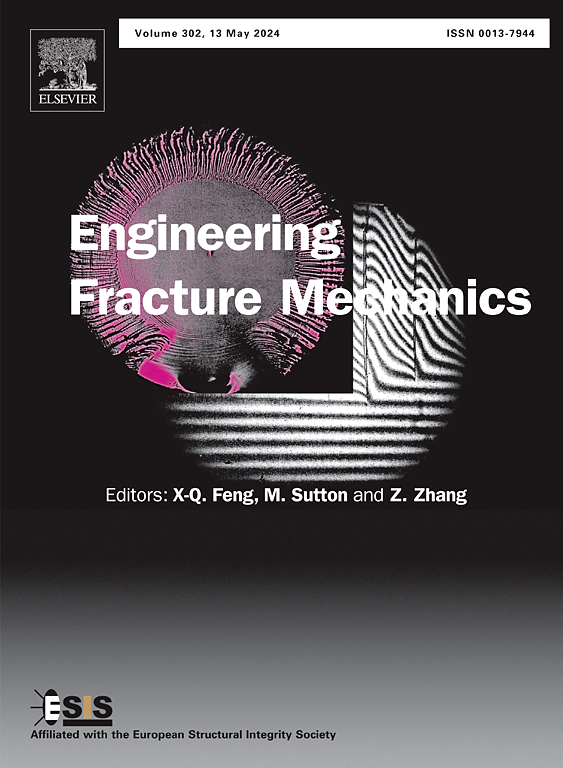Far-field reactivation of natural fractures by stress shadow effect
IF 4.7
2区 工程技术
Q1 MECHANICS
引用次数: 0
Abstract
Hydraulic fracturing is the most important means to achieve the reservoir stimulation of tight formations like shale, where the reservoir permeability is enhanced after the interaction between hydraulic fracture (HF) and natural fractures (NFs). Apart from the widely known direct intersection behaviors between HF and NFs (i.e., the HF meets the NFs), the NFs may also be reactivated by the stress shadow effect of HF, but the failure mechanism and reactivation modes are still unclear. To address this, the far-field reactivation of NFs under the stress shadow effect is described based on a hybrid phase field model (PFM) with the frictional contact criterion, where the open or slip conditions can be quantitatively calculated using the Mohr-Coulomb yield function along the contact interface of NFs. The zone with reactivated NFs is divided into mode II and mixed mode dominated sub-zones respectively, and the phase diagram of reactivation behaviors is summarized as variations of the location and angle of the NF. The NF reactivation modes are discussed under different geological conditions (strength of NFs, distribution angle of NFs, and initial stress difference). It could be found that the higher initial stress ratio leads to more mode II reactivated NFs, and NFs strengths and angles influence both mode II and mixed mode zones notably. The NF reactivation tends to take place with lower strength, higher injection rate, higher initial stress ratio, and special angle (e.g., HF are perpendicular to NFs), during which the permeability enhancement and reservoir stimulation are evaluated by the phase field model.
通过应力阴影效应实现天然断裂的远场再激活
水力压裂是实现页岩等致密地层储层增渗的最重要手段,水力压裂(HF)与天然裂缝(NFs)相互作用后,储层渗透率得到提高。除了广为人知的水力压裂与天然裂缝直接交汇行为(即水力压裂与天然裂缝交汇)外,天然裂缝还可能因水力压裂的应力阴影效应而被重新激活,但其失效机理和重新激活模式仍不清楚。针对这一问题,本文基于混合相场模型(PFM)和摩擦接触准则,描述了应力阴影效应下 NFs 的远场再活化,其中开放或滑移条件可通过沿 NFs 接触界面的莫尔-库仑屈服函数进行定量计算。有再活化 NF 的区域被分别划分为模式 II 和混合模式占主导地位的子区域,再活化行为的相图归纳为 NF 位置和角度的变化。讨论了不同地质条件(NFs 强度、NFs 分布角度和初始应力差)下的 NF 再激活模式。研究发现,较高的初始应力比会导致更多的模式 II 再活化 NF,而 NF 的强度和角度对模式 II 和混合模式区都有显著影响。NF再活化倾向于在较低强度、较高注入率、较高初始应力比和特殊角度(如高频与NF垂直)条件下发生,在此过程中,渗透率的提高和储层的激励作用可通过相场模型进行评估。
本文章由计算机程序翻译,如有差异,请以英文原文为准。
求助全文
约1分钟内获得全文
求助全文
来源期刊
CiteScore
8.70
自引率
13.00%
发文量
606
审稿时长
74 days
期刊介绍:
EFM covers a broad range of topics in fracture mechanics to be of interest and use to both researchers and practitioners. Contributions are welcome which address the fracture behavior of conventional engineering material systems as well as newly emerging material systems. Contributions on developments in the areas of mechanics and materials science strongly related to fracture mechanics are also welcome. Papers on fatigue are welcome if they treat the fatigue process using the methods of fracture mechanics.

 求助内容:
求助内容: 应助结果提醒方式:
应助结果提醒方式:


